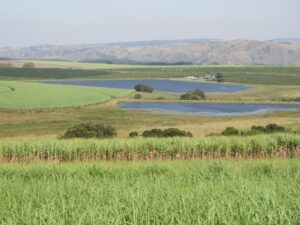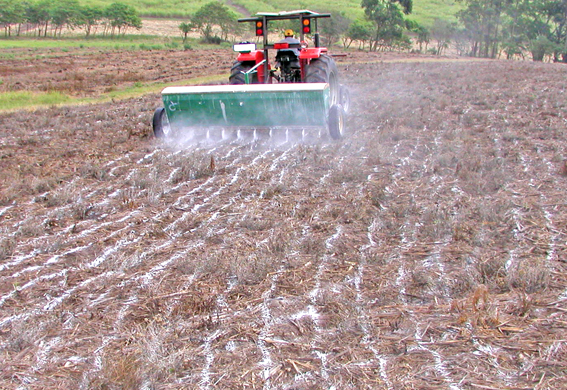It is not too late to take leaf samples, provided the crop has not undergone any stress during the last two months and the cane is the correct age for sampling. The results from leaf samples can indicate changes which maybe necessary in the coming season’s fertiliser programme.
Plan to sample soils as early as possible, so that lime application and the planting of green manure crops can be done timeously. Green manures for winter fallows also need to be planned. Although not a legume, oats are popular, and this crop can be especially useful in fields where creeping grasses are a problem.
High levels of soil acidity in the midlands and coastal hinterland regions, and the build-up of salinity/sodicity in the northern regions, can have a significant effect on cane yields if not properly addressed. If either of these problems is suspected, the only reliable way to confirm their presence is by taking both top and subsoil samples and sending these to SASRI’s Fertiliser Advisory Service (FAS). Speak to your SASRI Extension Specialist.
 The protection of wetlands and watercourses in the industry is now firmly under the spotlight. Well-protected watercourses and wetlands are essential to prevent excessive soil loss and to maximise water retention on your farm. Should signs of erosion appear in these areas ask your SASRI Extension Specialist for advice. Much work has been done in the past on ways to protect the banks of streams and how to encourage the rehabilitation of wetlands; there is therefore a wealth of information available. There are opportunities currently, with less pressure to expand area under cane, to withdraw cane from sensitive areas adjacent to wetlands and watercourses, thereby improving their stability.
The protection of wetlands and watercourses in the industry is now firmly under the spotlight. Well-protected watercourses and wetlands are essential to prevent excessive soil loss and to maximise water retention on your farm. Should signs of erosion appear in these areas ask your SASRI Extension Specialist for advice. Much work has been done in the past on ways to protect the banks of streams and how to encourage the rehabilitation of wetlands; there is therefore a wealth of information available. There are opportunities currently, with less pressure to expand area under cane, to withdraw cane from sensitive areas adjacent to wetlands and watercourses, thereby improving their stability.
The Sustainable Sugarcane Farm Management System (SUSFARMS®) is an excellent practical tool which can be used to gauge the level to which environmental better management practices have been implemented on your farm. Speak to your SASRI Extension Specialist for more details.

